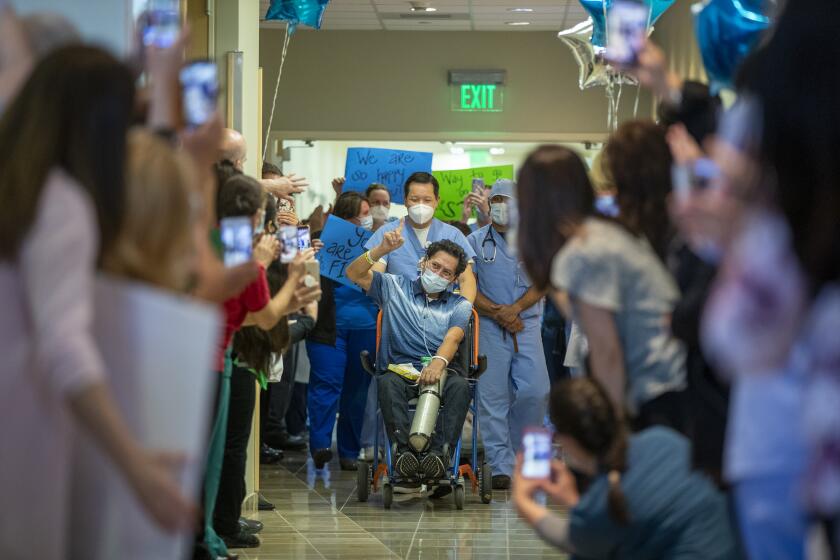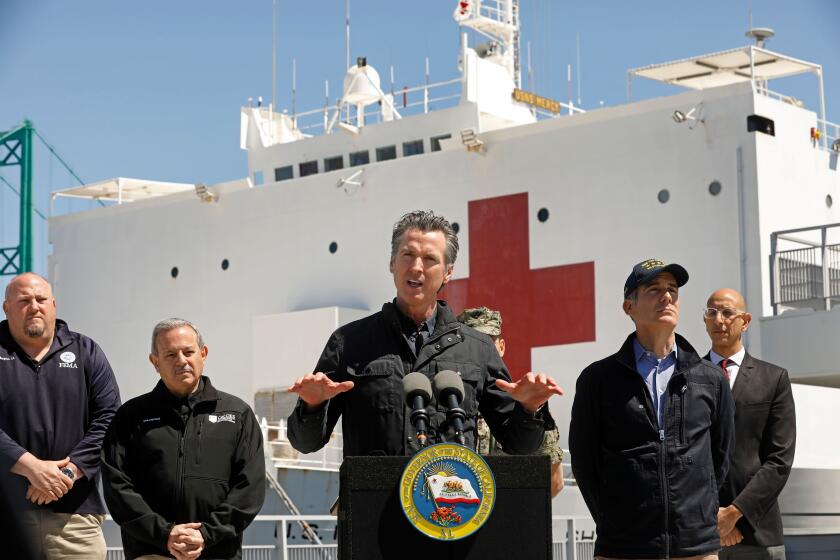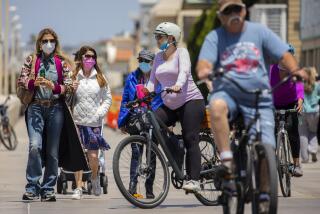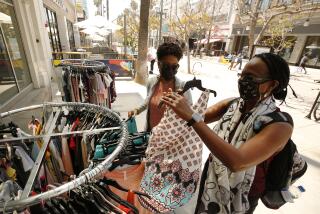L.A., other counties plan to reopen some businesses in May. Retail might be among the first
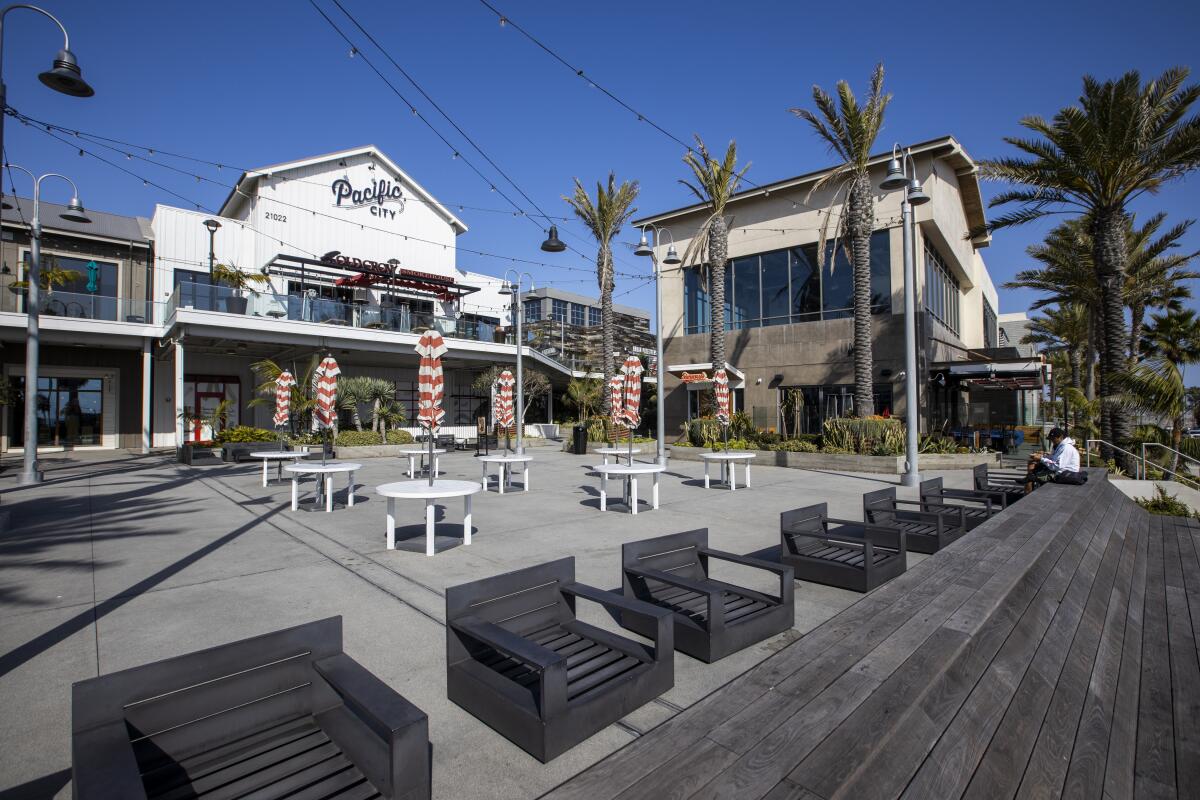
Local governments are beginning to map out how they could ease some of the coronavirus stay-at-home orders, with officials saying the process could gradually begin in May and continue in targeted ways through the summer and fall.
The exact timeline is based on several factors, including a significant drop in coronavirus cases as well as fewer hospitalizations and the ability to do extensive testing.
But it’s become clear some orders will probably be lifted before others. It’s possible some retailers could open with such safeguards as mask wearing and social distancing policies. Some recreation space, trails and beaches could reopen in this early phase, with strict distancing rules.
These are some of the unusual new scenes across the Southland during the coronavirus outbreak.
Mass gatherings — including concerts, sporting events and other public festivals — will probably be slower to return.
Los Angeles County Department of Public Health Director Barbara Ferrer spoke of certain strategies being in place “as we begin to lift our health officer order, Safer at Home, later on in the month of May, in most likelihood.”
Ferrer said things will be different as businesses reopen: Social distancing will still be important. Retail stores will have “limits on how many people can be in a store at any given time so that people who are there can maintain a lot of distance between themselves,” she said at a news briefing.
Arts, exhibitions and cultural sites will reopen at some point, “but events may be spectator-free,” she said, and the number of people allowed inside might be limited.
And when trails and bike paths reopen,“they may need to be one-way, so that people can keep physical distance from one another.”
Ferrer’s comments come as L.A. County’s new order instructing all 10 million residents to wear face coverings while shopping at essential businesses went into effect Wednesday night.
“What we’re going to be working on as part of our recovery is figuring out how we can, in fact, get more people back to work,” she said.
Wear a mask when inside an essential business, or when riding a bus or train. The cities of Long Beach, Pasadena and L.A. have issued similar orders.
Ventura County officials suggested a new order in the coming days could ease restrictions as long as it does not undo the progress that’s been made. Dr. Robert Levin, the county’s public health officer, said he doesn’t foresee adding any further stipulations to the stay-at-home order, which was extended to May 15.
“We will only do that if we believe that we can do that without endangering our social distancing,” Levin said Wednesday. He cautioned against stopping measures too early.
“People seem to forget that the measures that we’ve taken are the reason that we’re successful. And so, I think it’s important for us not to lose faith in those measures,” he said.

Gov. Gavin Newsom expressed similar feelings this week. He said under the “new normal” in California, face coverings might become a mainstay, schools might stagger start times for students, restaurants may reopen with fewer tables and large gatherings would remain off limits.
The administration highlighted six key indicators for altering his stay-home mandate, including the ability to closely monitor and track potential cases, prevent infection of high-risk people, increase surge capacity at hospitals, develop therapeutics and ensure physical distance at schools, businesses and child-care facilities.
Santa Cruz County officials said they were in talks with their counterparts in the Bay Area to create a regional approach to easing the shelter-in-place rules implemented a month ago.
The Santa Cruz County health officer, Dr. Gail Newel, told the Board of Supervisors on Tuesday that she was “working with regional and state health officers to draft a less restricted shelter-in-place [order] to start on May 4th. So we’ll see how the next two weeks go, but we’re looking at lifting some of the restrictions.”
Ideas include allowing some industries where work is done outdoors, such as construction and landscaping, to get back to work if employees practice social distancing, said Jason Hoppin, a spokesman for Santa Cruz County. The existing shelter-in-place order for Santa Cruz County and the counties of San Francisco, San Mateo, Santa Clara, Alameda, Contra Costa and Marin expires May 3.
Santa Cruz County was already planning to reopen some beaches and parks on Thursday. The county health officer issued a blanket order that began April 8 and expired Wednesday, closing all trails, beaches, piers, parks and parking lots for a seven-day period that included the Easter and Passover holidays.
Models show California is at or near the peak of new coronavirus cases, as long as restrictions remain in effect. The question: How fast will the numbers start dropping?
The county emphasized that reopening some beaches would allow residents to resume using them for daily walks and allow solo surfers back into the ocean. The opening was not, however, an invitation for large groups of people to spend a day together at the beach, which would be a violation of the stay-at-home order.
“An all-day-at-the-beach situation, that’s what we don’t want,” Hoppin said.
Santa Cruz County will be limiting parking near beaches, closing some spots and instituting restrictions elsewhere that require a parking permit.
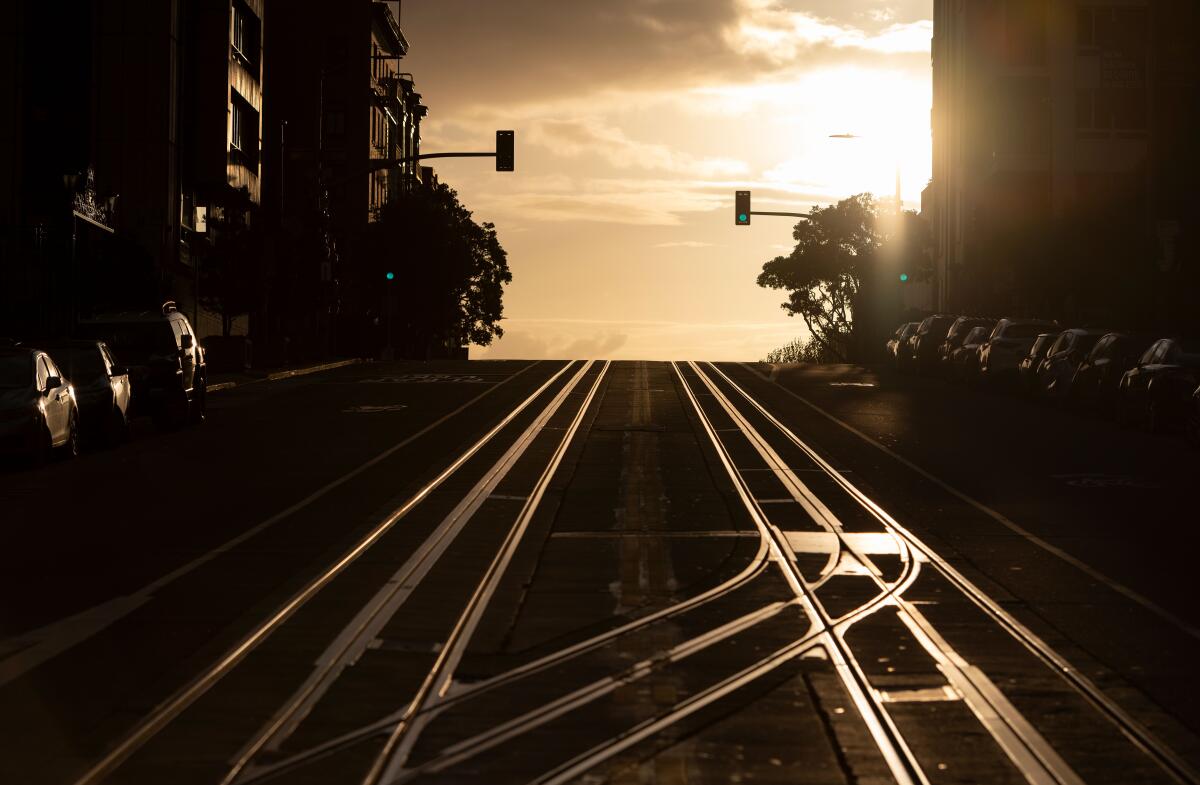
Officials were optimistic they had avoided a disaster by moving early to keep residents at home to avoid the spread of the coronavirus.
On the same afternoon after six Bay Area counties ordered residents to shelter at home on March 16 — the first order of its kind in the nation — Santa Cruz County issued a similar order. At that time, Santa Cruz County had reported nine COVID-19 cases and no deaths.
Officials in this county of 273,000 people — separated from the Bay Area by a mountain range — had feared a surge in cases would appear by mid-April and quickly overwhelm the limited number of hospital beds.
Yet there have been five or fewer hospitalized coronavirus patients on any given day during April, according to a slide presented by Mimi Hall, director of the county health services agency, at this week’s Board of Supervisors meeting.
As a result, Santa Cruz County canceled a state request for volunteer staff to help deal with coronavirus patients. As of Thursday, Santa Cruz County had reported 96 coronavirus cases and two deaths.
“The actual disease curve that we’re seeing — and the actual number of cases — has flattened dramatically since we started our shelter-in-place order,” Hall said.
At one point, Hall showed an image of The Times’ coronavirus tracker, showing a chart comparing the progression of coronavirus cases among 53 of California’s 58 counties with infected residents.
The Times’ chart showed how Santa Cruz County’s trend of new cases is relatively flat compared with other counties where cases are rising more rapidly, such as in Riverside County in Southern California and Kern, Stanislaus and Tulare counties in the Central Valley.
Trump announces guidelines for phased opening of states, starting with those relatively few COVID-19 patients.
Elected officials in Santa Cruz County praised the public for adhering to the shelter-in-place order.
“I know some of the decisions ... have been controversial,” Supervisor Bruce McPherson said. “But they have been necessary, and I think we just have to look at the results to say they are positive.”
Times staff writer Melissa Gomez contributed to this report.
More to Read
Sign up for Essential California
The most important California stories and recommendations in your inbox every morning.
You may occasionally receive promotional content from the Los Angeles Times.
